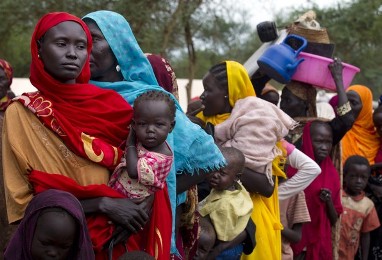Thousands fleeing S. Kordofan’s fighting continue to arrive in South Sudan: UNHCR
June 3, 2016 (KHARTOUM) – The United Nations High Commissioner for Refugees (UNHCR) has disclosed that 3,000 people fleeing the fighting in South Kordofan have arrived in South Sudan in May and said that thousands more are expected in the coming weeks.

In a press conference on Friday in Geneva, UNHCR spokesperson Adrian Edwards said this weekend marks the 5th anniversary of the conflict in South Kordofan, pointing that people continue to flee the region, with most crossing into South Sudan.
He pointed that more than 7,500 refugees have arrived in Yida in South Sudan’s northern Unity State since the beginning of this year, saying that nearly 3,000 people arrived in May alone.
“The area is already home to some 70,000 refugees. With the conflict intensifying, thousands more are expected in the coming weeks,” he said.
Edwards added that most of the fleeing people are from Heiban, Um Doreein and Al Boram Counties in the Nuba Mountains, noting they speak of escalating violence in the area including ground attacks and aerial bombings.
In recent months, the SPLM-N continued to say that the Sudanese army intensified aerial bombing on several areas in the Nuba Mountains, pointing to the killing of six children from one family by barrel bombs in Heiban on 1 May.
Also, last week members of Sudan’s Troika including the United Kingdom, Norway and the United States condemned the Sudanese government’s aerial bombardment of civilians in Kauda and Heiban including the bombing of St. Vincent Elementary School on 25 May.
Edwards added that the recent arrivals cite lack of food and no access to schools for children as reasons for leaving, saying most people are arriving by truck while others come on foot or by bicycle, traveling up to seven days.
According to the spokesperson, the refugees who have arrived this week say the conflict has recently shifted to the north-east part of South Kordofan, with some people trapped in conflict areas and unable to escape.
He pointed that nearly 90% of new arrivals are women and children, saying one child in every ten is alone or without a family member.
Edwards further added that the UNHCR and its partners are providing immediate assistance to the arrivals including a hot meal, water, a measles vaccination, a place to rest and other help at the Yida transit centre.
He pointed the refugees are transported after a few days by bus from Yida to Ajuong Thok, a camp established in 2013 to help ease some of the pressure, saying there they are provided with plastic sheeting and poles to build a temporary home besides cooking pots and pans, mosquito nets, blankets, sleeping mats and food.
Edwards said that 41,000 Sudanese refugees are currently living in Ajuong Thok, pointing the UNHCR and its partners have been expanding camp infrastructure to meet the needs of a growing population.
“We have installed six additional water tanks, built hundreds of latrines, opened a new primary school and have begun constructing another one,” he said.
According to him, a new camp is underway at Pamir, some 50 kilometres south of the border, to receive new arrivals and refugees who have been living in Yida for the past five years.
The spokesperson stressed that nearly 250,000 Sudanese refugees have fled to South Sudan, mostly to Unity and Upper Nile since the start of the war in the Nuba Mountains in 2011.
“A solution to the conflict and an end to the suffering are needed more than ever. South Sudan is itself home to some 1.69 million internally displaced people,” he said.
